- FCL Coaches Corner
- Posts
- Coaches Corner: 10/26/25
Coaches Corner: 10/26/25
Quality shots: how to define them and why it's important.

Welcome back, Coach.
Welcome back to FCL’s Coaches Corner. Where we dig into coaching lessons, share resources, and work to grow together. Every other Sunday, we distill ideas we’ve learned from great coaches across all sports, hoping to give you a few tools and thoughts you can bring back to your team.
Let’s dive in.
(Missed the last Coaches Corner? Catch up here.)
Matt Dunn & Deemer Class
Today’s Menu Includes:
🔦 Coach Spotlight: Casey Alexander
🧠 Some Outside Inspiration: Casey Alexander on the Slappin’ Glass Podcast
🤓 A Trip to the Principles Office: What is a Quality Shot?
🔥 A Webinar Freebie: Phil Barnes - Defensive Settled Play Planning
🔦 Coach Spotlight
Casey Alexander - College Basketball Head Coach
“Last year for example, we went through a good stretch of time in practice, where in all of our competitions, which for us is 4v4 or 5v5. If you made a three, and we did not think that was a quality three. On the line, on balance, on rhythm, open shot, your team did not get points for it.
Even if you are a great player. We didn’t differentiate from player to player. And then the same thing with 2s, you might drive in there and make a tough 2 through contact, you know fall down and 1, everything else, but it wasn’t a very high percentage shot.
If its not like a 70%+ 2 point shot, then we are not going to give you credit for that in practice. Your team gets 0 points, you score but you get 0 points because it wasn’t the shot quality that we want.”
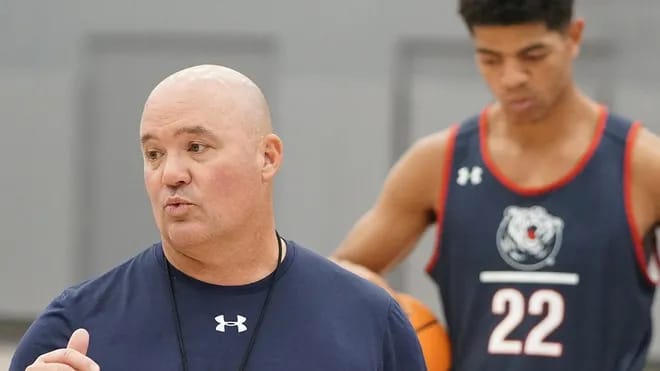
There is a lot to unpack in this quote. Starting from the top, Coach Alexander first defines what a quality shot is (in this case a quality three pointer). He defines a quality shot to be:
On the line
On Balance
On Rhythm
Open
This paints a clear picture of what he is asking his players to do. He enforces quality shots in a simple way: in any competition drill, made baskets only count on the scoreboard if they adhere to the guidelines set.
This gives players the freedom to take any shot in practice. They learn what quality shots look and feel like through instant feedback. It utilizes their drive to win, to fuel the effort put into generating a high quality shot.
🧠 Outside Inspiration
Casey Alexander on the Slappin’ Glass Podcast
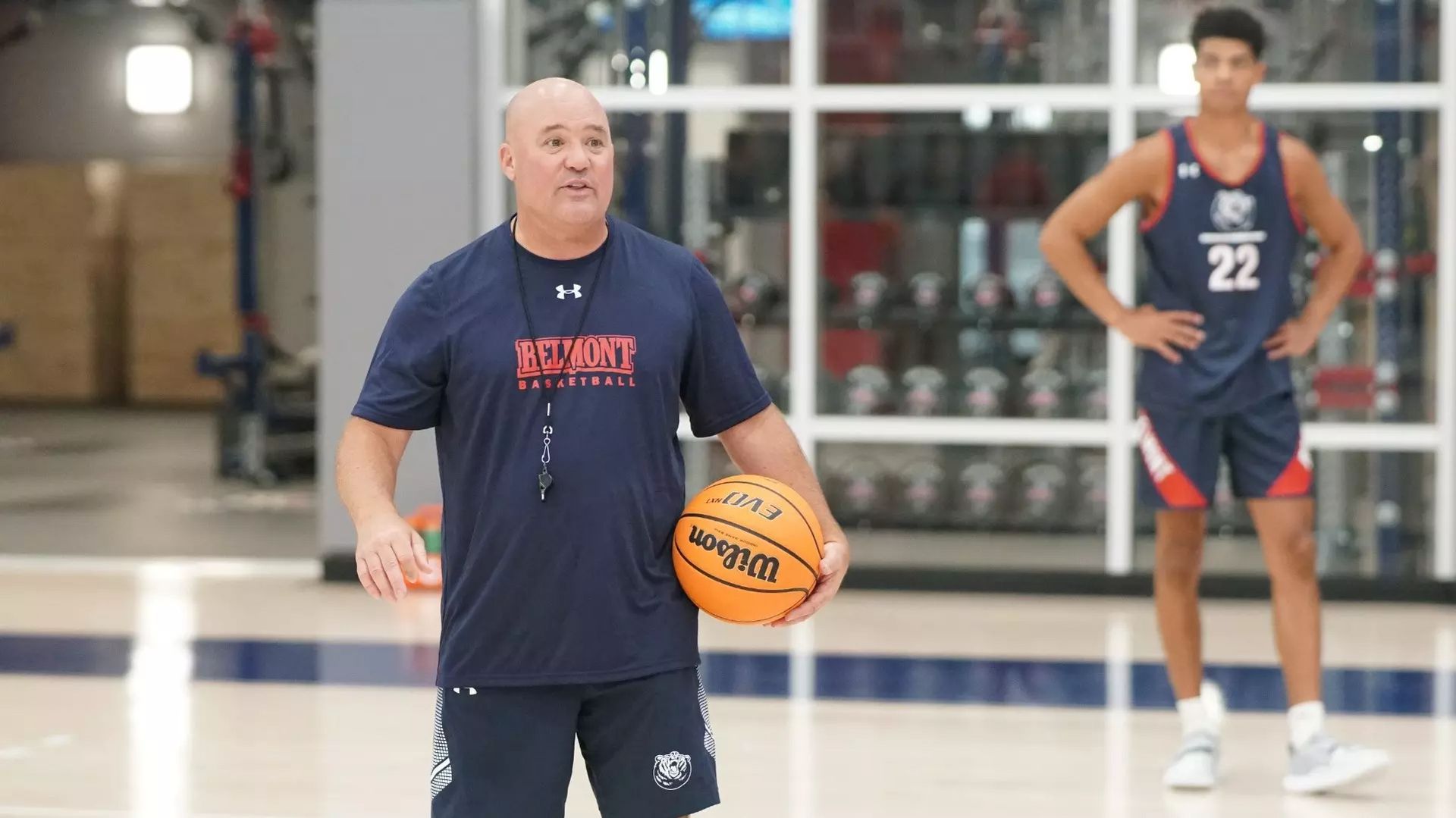
🎧️ Spotify Link
In this podcast, Coach Casey Alexander joins the Slappin’ Glass Podcast where he talks about offensive philosophy and efficiency, teaching styles, recruiting and culture, defensive adjustments, and coachig development.
With so many skills translating from basketball to lacrosse, this is a great listen where you are sure to learn something that you can use with your own teams.
🤓 The Principles Office
What is a Quality Shot?
Today’s Principles Office focuses on defining a quality shot. While it might seem obvious, especially once explained, I do not believe this concept is clearly laid out often enough.
Before we define quality shots, it’s worth stating why they matter. Offenses are built to generate them; defenses are built to prevent them. That shared clarity is what ties both sides of the ball together.
High Level View
When you’re defining something subjective like a “quality shot,” start with the obvious. Build a strong base on what’s certain, then layer in the nuance.
Part 1: Location
The first and most important piece is location, which we believe contains two critical factors: range and angle.
Range
If we can agree that quality shots don’t happen below GLE or outside the restraining box, we have a foundation. From there, we can calibrate what realistic scoring locations look like. It’s less about getting it perfect and more about consistently using location as a filter.
Angle
Your stick needs to see enough of the goal to truly challenge the goalie. A poor angle means poor odds, no matter how hard or accurate the shot. In general, this means getting towards the middle of the field.
So right away, we can define the area where a shot shifts from bad to good:
Location = Range + Angle
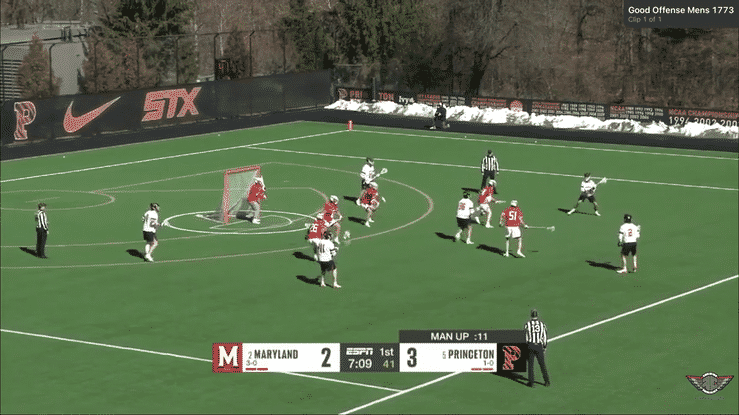
Part 2: Disruption
The next thing that comes to mind is are we undisrupted or disrupted.
An undisrupted shot is a hands free shot, that is balanced
A disrupted shot would be any shot where the defender’s stick is in your hands, or your momentum is not taking you in the direction of the center of the defense / the cage
We have zeroed in on two key aspects of a shot that determine if it is a high quality shot or not: Location and Disruption Level.
Next, we will take a look at how some coaches define a quality shot.
Zooming in — Examples from Coaches
A few weeks ago, we had LIU Offensive Coordinator Coach Kyle Hayes on for a webinar. Coach Hayes uses a simple acronym to define a quality shot: ROA.
Range: How far from the cage are you? Are you within your own range?
Open: Are your hands free, or is this a contested shot?
Angle: How much of the 6×6 cage is in front of us?
Jacksonville Head Coach John Galloway defines a quality shot to be:
Stick must be to the inside on any finish down the alley / shot on the run down the alley
No shots on the run outside of 8 yards - Feet must be set outside of 8 yards
No shots that go out on the sideline - Don’t take shots with little to no angle
1 out of 3 shots must be using the turf (more of a reminder to change levels)
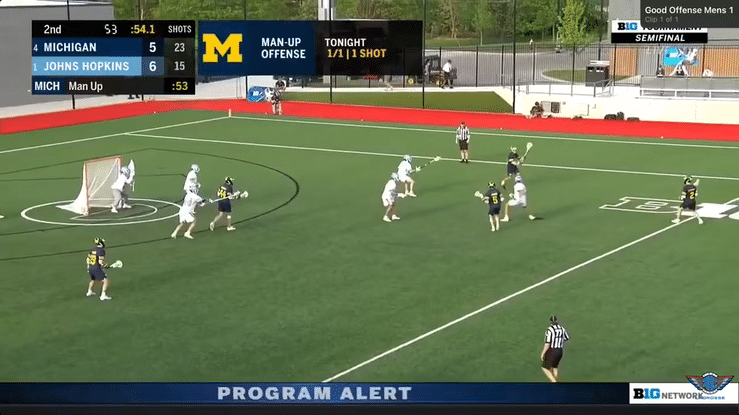
Brian McCormick, a basketball coach with a PhD in Exercise and Sports Science, writes in his book NADA: The Antifragile Defense that an open shot can be defined with the acronym ROB:
In your Range
Open
On Balance
In Practice — Real Game Examples
Across all these examples, two themes stand out: location and contest level.
Location = Range + Angle
Open = Hands Free + Balance
Let’s put this into practical terms.
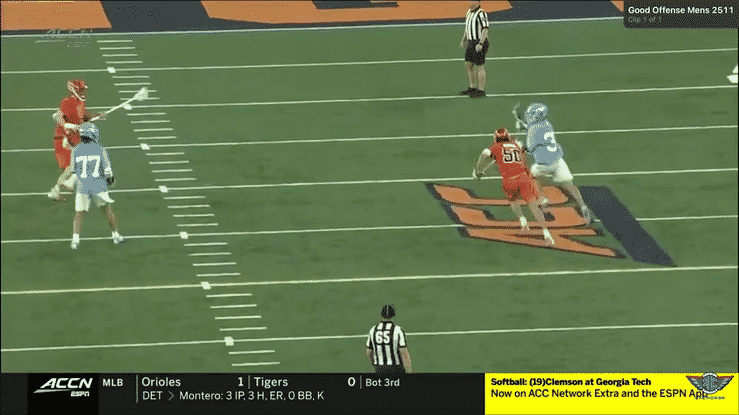
While there are more variables that can be taken into account (dominant vs non-dominant hand, what’s the situation, changing planes, etc.), avoid getting too narrow with your definition of a great shot.
“It is indicative of your team. Some guys on our team have a longer leash. Foundationally, we start here and then we can build out some of our leash for our players based on their talent and skill level”
Coach Galloway puts it best, it is important to set a standard with your team early in the season. That standard may be flexible on a player to player basis, but you need some common ground to fall back on.
This is also true from a defensive perspective. When we scout teams and gameplan, it is important to discuss what quality shots look like for different players.
Here are some simple conditions to define a great shot. If every one of these terms are met, the result will likely be a great shot:
Location = Range + Angle
No shots on the run outside of 8 yards, feet must be set on shots outside of 8 yards (Range)
No shots outside of 12 yards (Range)
Must release the ball more than 3 yards above GLE (Angle)
No shots go out of bounds on the sideline (Angle)
Open
Hands free
Momentum going in the direction of the goal
These are examples and could certainly be tweaked. It doesn’t mean players will not score in other ways… but setting guidelines like this should improve scoring efficiency.
Generating Quality Shots
It is a helpful to remind our unit the following: these are not your shots, they are our shots. This simple framing can help players view their shot choices through a different lens. Let’s take a look at two quick ways players can enhance shot quality.
S Dodge > Alley Shot
For instance, the S dodge down the alley is great because it increases the angle of your shot (stick to the middle) and your momentum is in the direction of the goal.
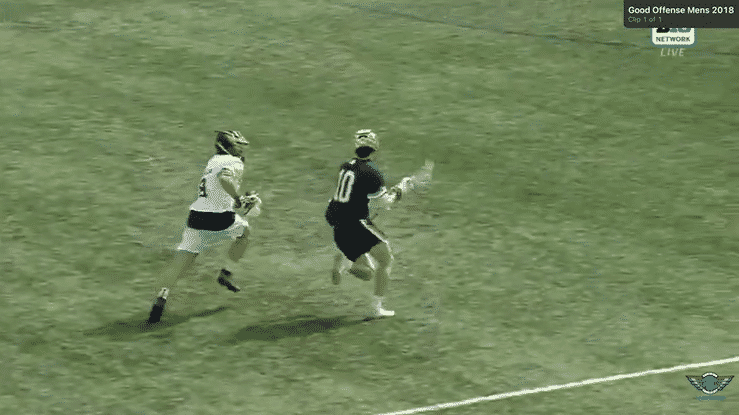
Hitch > Contested Shot
A simple hitch off of ball movement can be a quick move that will increase your angle and potentially decrease your range.
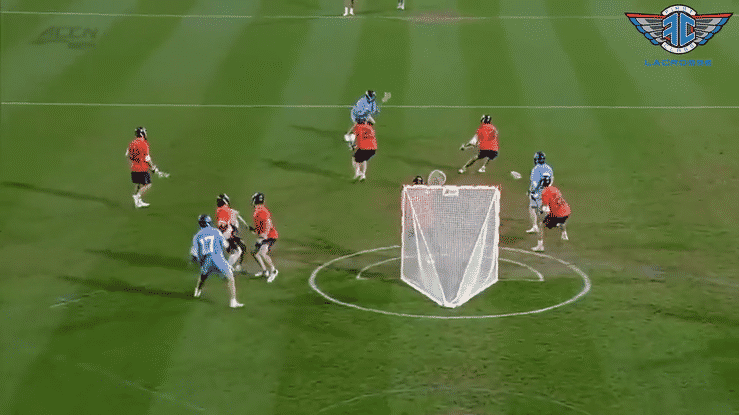
As coaches, it is our job to build drills around these landmarks so that players can develop a field sense. We must give them feedback in practice so that when we get to the game, players feel confident in their decision making.
Wrapping It Up
Defenses need to understand what shots they are willing to give up. Offenses need to understand what shots they are looking to generate. Defining what a quality shot is for your players is fundamental to their decision making process.
It is crucial that both you and your players are on the same page when it comes to interpreting the quality of a shot.
There is a difference between a good shot and a great shot. An 11 yard shot on the run might be a good shot for some players, but an 11 yard step down is a better shot for those same players.
By clearly defining what a great shot, you empower your players to make better decisions on the field.
Until Next Time

Now that’s what we call a high quality shot.
Thanks for taking a trip down the hallway. If you are looking for a deeper dive, we have posted numerous videos on our Instagram, Twitter and YouTube channels on this topic.
Stay tuned for more content all spring and email us at [email protected] with any questions and let us know your thoughts.
What did you think of today's email?Contact us directly with more thoughts please! |
🚨 Webinar Freebie 🚨
This week’s freebie is from our webinar with former UNC Women’s Coach, Phil Barnes. Coach Barnes delivered a webinar on planning for different scenarios in order to prepare your team for the season. One segment we really liked was his discussion on settled defensive play. See a brief excerpt of the presentation below
The FCL Circle community is the best resource on the market for any men’s or women’s coaching staff to continue developing through new drills and strategies. It includes over 30 college coach webinars, 100+ drills for offense, defense and full team compete.
🎥 WEBINAR FREEBIE: Defensive Settled Play Planning
🔦 COMMUNITY TOUR: Watch Community Tour Here.
🎙️ FCL PODCAST & COACH COMMUNITY
Want to keep sharpening your coaching toolbox?
🎧 Podcast – Check out our free podcast on Spotify, YouTube and Apple podcast. Who’s ready for season 2?
🔥 Online Community – For coaches who want to level up. Join our men’s and women’s coaching communities for in-depth webinars, drills, and strategy sessions with top college coaches.

